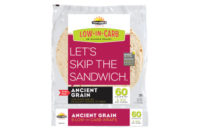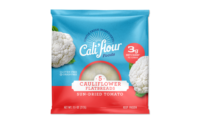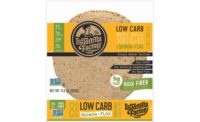![]()
Do Low-carb Lifestyles Spell the End of Snacking?
A contrarian analysis
by Joseph Marra
Executive Director, The Natural Marketing InstituteLate 2003 and early 2004 were characterized by the sight and sound of frenzied war-room meetings by consumer packaged-goods companies and the trade organizatios representing them. The best minds in the pasta, bread and snack industries have been furiously brainstorming and strategizing for ways to combat a common foe. The enemy in this case is not a terrorist organization but a phenomenon that has swept the nation: low carb.
Trends in low-carb dieting are understandably unsettling for any company that produces grain-based products, since grains are, by their nature, high in carbohydrates per unit of material. According to the Natural Marketing Institute’s Health & Wellness Trends Database (HWTD), a nationally projectable consumer study with five years of data, the number of Americans who are trying a low-carb lifestyle to lose weight grew by 50% in 2003 as compared to 2002.
It is also true that marketers of traditional high- carb foods have begun to grumble about sales declines, which they attribute directly to the low- carb phenomenon. Bread and pasta companies are feeling the squeeze, and Florida orange-juice packers have even suggested that they would consider suing the originator of the South Beach Diet (a variation on the strict Atkins low-carb approach), who advocates that fruit juices should not be consumed because juicing simply delivers a more concentrated dose of the fruit’s naturally occurring sugar than would be ingested if one simply ate the fruit itself.
Low-calorie and diet products have also suffered from the low-carb onslaught. In response to flat or declining sales of its Slim-Fast products (a low-calorie diet/meal replacement drink which nonetheless contains sugar and approximately 40 grams of carbohydrates per serving), Unilever has introduced a new, low-carb Slim-Fast line.
However, despite these somewhat alarming trends, consumer data suggest that there is reason for optimism in the industries most affected by the advent of a low-carb America, especially the snack foods industry. In fact, it appears that ample opportunities exist if the low- carb movement is seen in the proper light.
Examine the following thumbnail description of a consumer segment, and decide whether the group presents an attractive, opportunistic target for snack food manufacturers, marketers and retailers. This consumer segment makes up 24% of the general population, equating to 50 million U.S. adults. Compared to the general population (“GP”), these consumers are:
- higher earners, with higher mean household income
- 15% more likely to earn in excess of $75,000 per year
- less likely to purchase products based on price
- much more likely to try and to adopt new products
- opinion leaders among their friends and families
- more likely to state that “snacking can be part of a healthy diet”
- more likely to be users of all grain-based snacks
So who are these high income, early-adopting, snack-loving, consumers? The intriguing consumer group described above is composed of:
Low-carb Weight Managers (“LCWM”) are defined as all who have used “eating less carbohydrates” as a method of losing weight in the past year.
How could Low-carb Weight Managers (LCWM) have a higher desire for snacking and higher usage of grain-based snacks? Although these findings seem counter-intuitive, they begin to make sense as the data are carefully examined.
Low-carb Weight Managers are more than twice as likely as the GP to be managing weight using any means. Their body mass index and cholesterol levels are also 15% higher than the GP, on average. Whether these weight-related health issues are the effect of their propensity for snacks is unknown, but the fact remains that low-carbconsumers desire snacks. Grain-based snack usage is summarized in Table 1, on page 57:
As shown in Table 1, LCWM report higher usage across the board for grain-based snacks.
| Table 1: (% consumers who have used ... in the past three months; INDEX LCWM vs. GP) | |||
| SNACK PRODUCT | GP USAGE | LCWM USAGE | INDEX* |
| TORTILLA CHIPS | 44.2% | 47.5% | 107 |
| NUTS/SEEDS | 42.4% | 49.6% | 117 |
| PRETZELS | 39.5% | 41.4% | 105 |
| CORN CHIPS | 27.6% | 29.0% | 105 |
| GRANOLA BARS | 24.0% | 28.0% | 117 |
| CEREAL BARS | 21.9% | 24.5% | 112 |
| *Index indicates comparison of LCWM vs. GP where GP = 100; therefore, an Index of 117 | indicates that LCWM are 17% higher than GP for that attribute or measure|||
The higher usage of snack foods by LCWM is also supported by their responses to a battery of snack-related attitudinal questions. For example, three-fourths of LCWM agree that “snacking can be part of a healthy diet,” a rate which is 12% higher than the GP. They are also 16% more willing than the GP to “trade off taste to eat a healthier snack,” and are 19% more likely than the GP to be “interested in healthy foods/beverages that can be eaten on the go.” Their desire for healthier, convenient snack foods suggests an unmet need.
These low-carb consumers are also more interested in health and nutrition than the GP. Nearly 85% of LCWM read product labels (24% higher than GP), and they are 28-37% more likely to select foods based on the food pyramid guidelines or based on nutritional content. They are also 27% more concerned than the GP about trans-fats in foods. Although these consumers may be voraciously reading labels in order to count carbohydrate grams, they also appear to be generally more conscious about healthy and harmful food ingredients than the GP.
Close scrutiny of these low-carbconsumers reveals that contrary to the prevailing wisdom, low-carbsnack opportunities abound. Many low-carbofferings have been rushed to market, with everything from low-carbbeers to low-carbfast foods. A more discerning approach for low-carbsnack foods would incorporate learnings about these consumers into the next wave of low-carbsnack products, which will be healthier, free of harmful ingredients, convenient, and of course, low carb.
All data herein courtesy of the Natural Marketing Institute’s Health & Wellness Trends Database (HWTD), copyright 2004.





